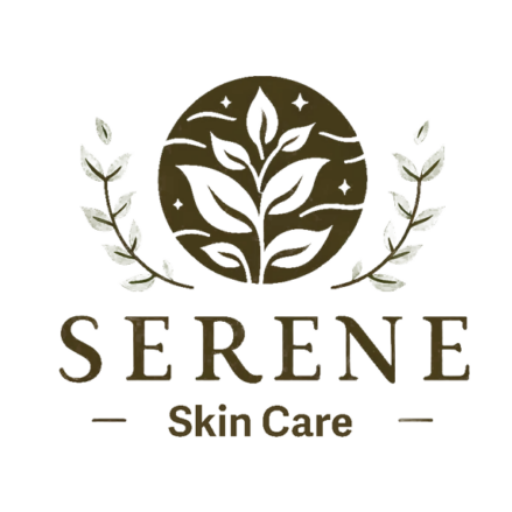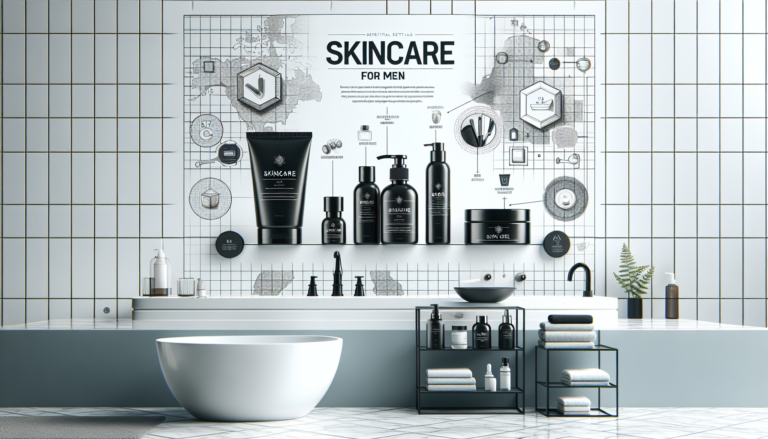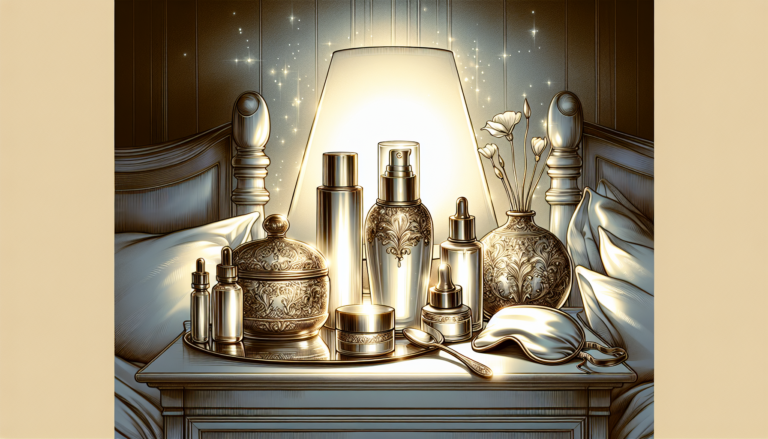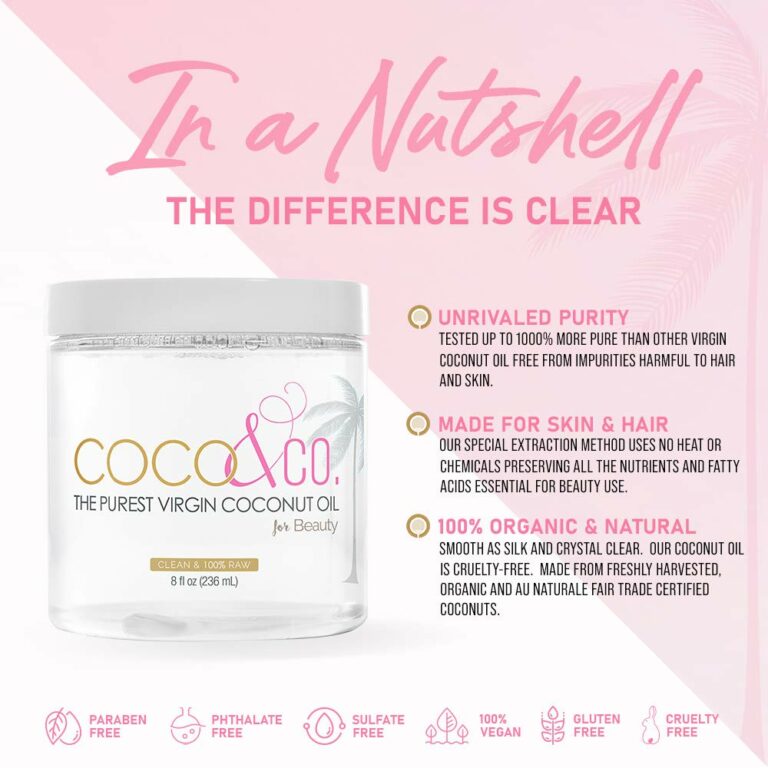In the pursuit of achieving rejuvenated and radiant skin, caring for the delicate eye area has never been more crucial. This article unveils a wealth of advanced techniques and methods designed specifically to provide optimal care for the eye area. From innovative massage techniques to specialized products, readers will discover the essential tools to maintain youthful and refreshed eyes, ensuring a vibrant and confident appearance.
Hydration
Importance of hydration for the eye area
Keeping the delicate skin around the eyes well-hydrated is essential for maintaining its health and appearance. The skin in this area is thin and delicate, making it more prone to dryness, fine lines, and irritation. Proper hydration can help prevent these issues and promote a youthful and radiant eye area.
When the skin around the eyes is properly hydrated, it becomes more resilient and supple, reducing the appearance of fine lines and wrinkles. Hydration also helps to maintain the skin’s natural moisture barrier, protecting it from external aggressors such as pollution and harsh weather conditions.
Choosing the right moisturizer
To effectively hydrate the eye area, it is crucial to choose a suitable moisturizer specifically formulated for this delicate region. Look for products that are fragrance-free and hypoallergenic to minimize the risk of irritation. Opt for moisturizers that contain hydrating ingredients like hyaluronic acid, ceramides, and glycerin.
Consider using an eye cream instead of a regular face moisturizer, as eye creams are specially designed to address the specific needs of the eye area. They are often formulated with lighter textures and gentle ingredients that won’t weigh down or irritate the skin.
Tips for effectively hydrating the eye area
In addition to using a moisturizer, there are several tips and tricks that can help maximize hydration in the eye area:
-
Drink plenty of water: Remember to stay hydrated from within by drinking an adequate amount of water throughout the day. Proper hydration from the inside out can significantly improve the appearance of the skin around the eyes.
-
Use a humidifier: If you live in a dry climate or spend a lot of time in air-conditioned environments, consider using a humidifier to add moisture to the air. This can help prevent the skin around your eyes from drying out.
-
Avoid rubbing or tugging: Be gentle when applying skincare products or removing makeup in the eye area. Avoid rubbing or tugging at the skin as this can cause irritation and damage the delicate tissues.
-
Protect from the sun: UV damage can lead to dryness and premature aging of the eye area. Always wear sunglasses and use sunscreen specifically formulated for the eyes to protect the skin from harmful UV rays.
By following these tips and incorporating a suitable moisturizer into your skincare routine, you can ensure that your eye area stays well-hydrated and healthy.
Sun Protection
Understanding the importance of sun protection
Protecting the delicate skin around the eyes from the sun’s harmful rays is crucial for maintaining its youthfulness and preventing potential damage. The skin in this area is thinner and more susceptible to UV damage, making it more prone to wrinkles, dark spots, and even skin cancer.
Excessive sun exposure can lead to premature aging signs such as fine lines, wrinkles, and sagging skin around the eyes. It can also contribute to the development of dark circles and hyperpigmentation. Therefore, incorporating sun protection into your daily routine is essential for preserving the health and appearance of the eye area.
Choosing the right SPF for the eye area
When it comes to choosing sun protection for the eye area, it is crucial to select products that are specifically formulated for this delicate region. Look for broad-spectrum sunscreens that provide protection against both UVA and UVB rays. A minimum SPF of 30 is recommended for daily use, but higher SPF options are available for those who spend extended periods of time outdoors.
Opt for gentle formulas that are ophthalmologist-tested and fragrance-free to minimize the risk of irritation. Consider using mineral-based sunscreens, which contain active ingredients like zinc oxide or titanium dioxide that sit on the skin’s surface and provide a physical barrier against the sun.
Applying sunscreen correctly
To ensure optimal protection, it is essential to apply sunscreen correctly to the eye area. Follow these simple steps:
-
Cleanse: Start with a clean and dry face to ensure proper adhesion of the sunscreen.
-
Dot and blend: Take a small amount of sunscreen on your fingertips and gently dot it around the eye area, including the eyelids and outer corners. Avoid getting the product into the eyes.
-
Pat gently: Using your ring finger, lightly pat the sunscreen into the skin until it is evenly spread and absorbed.
-
Reapply as needed: Remember to reapply sunscreen every two hours, or more frequently if you are sweating or swimming.
By incorporating sun protection into your daily skincare routine and applying sunscreen correctly, you can effectively safeguard the delicate skin around your eyes from the sun’s damaging effects.
Massage
Benefits of eye area massage
Massaging the eye area has numerous benefits that can help improve its overall health and appearance. The gentle manipulation of the skin and underlying muscles increases blood circulation, promoting the delivery of oxygen and nutrients to the area. This can help reduce puffiness, dark circles, and stimulate collagen production, resulting in firmer and smoother skin.
Regular eye area massage can also enhance the absorption of skincare products, allowing the active ingredients to penetrate deeper into the skin for maximum effectiveness. The soothing nature of the massage can also help relieve stress and tension, promoting relaxation and reducing the appearance of fine lines and wrinkles.
Techniques for massaging the eye area
When performing an eye area massage, it is essential to use gentle and controlled movements to avoid causing any discomfort or damage. Here are some techniques you can try:
-
Circular motion: Using your ring finger, gently massage the eye area in a circular motion. Start from the inner corner of the eye, move towards the outer corner, and then up towards the brow bone. Repeat this motion several times.
-
Tap and release: Lightly tap the skin around the eyes with your fingertips, then release the pressure. This tapping motion helps increase blood flow and promote drainage of excess fluid, reducing puffiness and dark circles.
-
Pressure points: Apply gentle pressure to specific acupressure points around the eye area. These points are believed to stimulate energy flow and improve circulation. Use your ring finger or thumb to apply the pressure, holding each point for a few seconds before releasing.
Using essential oils for massage
Incorporating essential oils into your eye area massage can enhance the experience and provide additional benefits. Lavender oil, chamomile oil, and rosehip oil are popular choices due to their calming and soothing properties.
Before using essential oils, ensure that they are diluted with a carrier oil such as jojoba oil or sweet almond oil to prevent any adverse reactions. Apply a small amount of the diluted oil to your fingertips and gently massage it into the eye area using the techniques mentioned above.
Remember to perform the massage with clean hands and be mindful of any sensitivities or allergies you may have. If irritation occurs, discontinue use and consult a dermatologist.
By incorporating regular eye area massage into your skincare routine, you can enhance circulation, promote relaxation, and improve the overall health and appearance of your eyes.
Eye Masks
Different types of eye masks
Eye masks are a popular skincare product designed specifically for the delicate skin around the eyes. They come in various forms, including gel patches, sheet masks, and cream masks, each offering unique benefits.
Gel patches: Gel patches are typically infused with ingredients like hyaluronic acid, aloe vera, and antioxidants. They are easy to use and adhere directly to the under-eye area, delivering a concentrated dose of hydration and nourishment. Gel patches are particularly effective in reducing puffiness, dark circles, and fine lines.
Sheet masks: Eye sheet masks are pre-cut masks that are shaped to fit the contours of the eye area. They are often saturated with potent serums that target specific concerns such as hydration, brightening, or firming. Sheet masks provide a cooling and refreshing sensation, making them a popular choice for quick and convenient eye care.
Cream masks: Cream masks are thicker and richer in texture compared to gel patches and sheet masks. They are typically applied in a thin layer around the eye area and left on for a specified amount of time before being rinsed off. Cream masks provide intense hydration, promote collagen production, and can help improve the appearance of wrinkles and fine lines.
Benefits of using eye masks
Using eye masks regularly can offer a range of benefits for the eye area:
-
Hydration and moisturization: Eye masks are an excellent way to provide intense hydration to the delicate skin around the eyes. They help replenish moisture, plump the skin, and reduce the appearance of dryness and fine lines.
-
Dark circles and puffiness reduction: Many eye masks contain ingredients like caffeine, vitamin K, and cucumber extract, which help constrict blood vessels, reduce inflammation, and visibly diminish the appearance of dark circles and puffiness.
-
Relaxation and stress relief: Applying eye masks creates a soothing and calming experience, promoting relaxation and reducing stress. The cooling and refreshing sensation can help alleviate eye strain and fatigue.
DIY eye mask recipes
If you prefer natural and homemade skincare solutions, you can easily create your DIY eye masks using simple ingredients found in your kitchen:
-
Cucumber and aloe vera mask: Blend half a cucumber with a tablespoon of aloe vera gel until smooth. Apply the mixture to the under-eye area and leave it on for 10-15 minutes. Rinse off with cool water.
-
Green tea and honey mask: Steep two green tea bags in hot water for a few minutes. Remove the tea bags and let them cool. Mix the contents of the tea bags with a tablespoon of honey to create a paste. Apply under the eyes and leave it on for 15-20 minutes. Rinse off with warm water.
-
Coconut oil and almond oil mask: Mix equal parts of coconut oil and almond oil. Gently massage the mixture into the under-eye area using circular motions. Leave it on overnight for maximum hydration. Rinse off in the morning.
Remember to patch test any homemade eye masks before applying them to ensure that you do not have any allergic reactions or sensitivities.
By incorporating eye masks into your skincare routine, you can provide targeted hydration, reduce common eye area concerns, and enjoy a relaxing and rejuvenating self-care experience.
Preventing Wrinkles
Factors contributing to eye area wrinkles
Wrinkles around the eyes, often referred to as crow’s feet, are a natural part of the aging process. However, certain factors can accelerate the development of wrinkles in the eye area.
-
Sun exposure: UV radiation damages collagen and elastin fibers in the skin, which are responsible for its elasticity and firmness. Excessive sun exposure can lead to the breakdown of these fibers, resulting in the formation of wrinkles.
-
Aging: As we age, the production of collagen and elastin decreases, leading to the loss of skin elasticity. This can cause fine lines and wrinkles to become more prominent.
-
Facial expressions: Repeated facial movements, such as squinting and smiling, can contribute to the formation of wrinkles around the eyes. Over time, these repetitive motions can lead to the development of permanent lines.
-
Genetics: Some individuals are genetically predisposed to developing wrinkles at an earlier age or more prominently in the eye area. Certain genetic factors can affect collagen production and the structure of the skin.
Daily habits for preventing wrinkles
While wrinkles are a natural part of the aging process, adopting certain daily habits can help slow down their development and keep the eye area looking youthful:
-
Wear sunglasses: Protecting your eyes from the sun’s harmful rays is crucial for preventing premature aging and wrinkles. Wear sunglasses with UV protection whenever you are outdoors to shield your eyes and the surrounding skin.
-
Use a gentle touch: Be mindful of how you handle the delicate skin around your eyes. Avoid rubbing or tugging at the skin, as this can cause damage and wrinkles. Instead, use gentle patting motions when applying skincare products or removing makeup.
-
Get enough sleep: Inadequate sleep can lead to the formation of fine lines and tired-looking eyes. Aim for seven to eight hours of quality sleep each night to allow your body to repair and regenerate skin cells.
-
Quit smoking: Smoking accelerates the aging process by damaging collagen and elastin fibers in the skin. Quitting smoking can significantly reduce the risk of developing wrinkles and other signs of premature aging.
Eating a balanced diet for wrinkle prevention
Maintaining a balanced diet can also support the prevention of wrinkles in the eye area. Here are some important nutrients to include:
-
Antioxidants: Foods rich in antioxidants, such as berries, leafy greens, and nuts, can help protect the skin from free radicals and oxidative stress, which contribute to skin aging.
-
Omega-3 fatty acids: Omega-3 fatty acids, found in fatty fish like salmon and sardines, as well as flaxseeds and walnuts, can help nourish the skin, improve elasticity, and reduce inflammation.
-
Vitamin C: Foods high in vitamin C, such as citrus fruits and bell peppers, help stimulate collagen production and protect against UV damage.
-
Water: Staying hydrated by drinking an adequate amount of water throughout the day is essential for maintaining skin health and preventing dryness and wrinkles.
By adopting healthy lifestyle habits, protecting the skin from sun damage, and nourishing the body with a balanced diet, you can significantly reduce the appearance of wrinkles and maintain a youthful eye area.
Reducing Puffiness
Causes of under-eye puffiness
Under-eye puffiness, also known as bags under the eyes, can be caused by various factors:
-
Fluid retention: Excess fluid can accumulate in the tissues around the eyes, leading to puffiness. This can be due to factors like inadequate sleep, allergies, hormonal changes, or high sodium intake.
-
Aging: As we age, the skin and muscles around the eyes may weaken, causing fat deposits to protrude and create a puffy appearance.
-
Allergies: Allergic reactions, such as hay fever or pet allergies, can cause inflammation in the delicate skin around the eyes, resulting in puffiness.
-
Poor lymphatic drainage: If the lymphatic system, which helps remove waste and excess fluid from the body, is not functioning optimally, fluid can accumulate around the eyes and cause puffiness.
Effective ways to reduce puffiness
While eliminating puffiness completely may not always be possible, there are several effective strategies for reducing its appearance:
-
Cold compresses: Applying a cold compress, such as chilled cucumber slices or cotton pads soaked in cold water, can help constrict blood vessels, reduce inflammation, and temporarily minimize puffiness.
-
Elevate the head: Sleeping with an extra pillow to elevate the head can prevent fluid from pooling around the eyes overnight, reducing morning puffiness.
-
Caffeine-based products: Caffeine has vasoconstrictive properties that can help reduce the appearance of puffiness. Look for eye creams or gels that contain caffeine and gently massage them into the under-eye area.
-
Eye massage: As mentioned earlier, massaging the eye area can help improve lymphatic drainage and reduce puffiness. Apply gentle pressure using your fingertips and use circular motions to massage the area.
-
Allergy management: If allergies are the cause of your under-eye puffiness, consult with a healthcare professional to determine the best course of treatment, whether it be medication or allergy management strategies.
Using cold compresses for immediate relief
Cold compresses can provide immediate relief from under-eye puffiness. Here’s how to use them effectively:
-
Start by rinsing a clean washcloth or cotton pads under cold water.
-
Squeeze out any excess water to ensure the compress is damp but not dripping.
-
Place the cold compress over the closed eyes and rest for 10-15 minutes.
-
Gently massage the eye area in circular motions while the compress is applied. This can help enhance the benefits of the cold temperature.
-
Remove the compress and pat the eye area dry with a soft towel.
For an extra refreshing and soothing effect, you can chill the compress in the refrigerator for a few minutes before applying.
By incorporating these strategies into your daily routine and addressing the underlying causes of under-eye puffiness, you can effectively reduce its appearance and enjoy a more refreshed and revitalized eye area.
Dark Circles Treatment
Understanding the causes of dark circles
Dark circles are a common concern and can be caused by a variety of factors:
-
Genetics: Some individuals are genetically predisposed to having dark circles. This is often due to an increased visibility of blood vessels beneath the thin under-eye skin or a naturally deeper pigmentation in the area.
-
Lack of sleep: Inadequate sleep can cause blood vessels to become more prominent, resulting in the appearance of dark circles. Additionally, sleep deprivation can lead to pale and tired-looking skin, making dark circles more noticeable.
-
Aging: As we age, the skin around the eyes becomes thinner and loses its natural fat and collagen. This can make blood vessels more visible and contribute to the darkening of the under-eye area.
-
Allergies and nasal congestion: Chronic allergies and nasal congestion can cause blood vessels to dilate and create dark circles. Rubbing the eyes due to itching or irritation can also worsen the appearance of dark circles.
Products and ingredients for treating dark circles
Various products and ingredients can help minimize the appearance of dark circles and brighten the under-eye area:
-
Eye creams with caffeine: Caffeine has vasoconstrictive properties that help constrict blood vessels and reduce the appearance of dark circles. Look for eye creams that contain caffeine as a key ingredient.
-
Vitamin C serums: Vitamin C helps brighten the skin and reduce discoloration. Applying a vitamin C serum to the under-eye area can help lighten dark circles over time.
-
Retinol creams: Retinol, a derivative of vitamin A, stimulates collagen production and can help thicken the skin, reducing the visibility of blood vessels and dark circles. However, retinol can be irritating to the delicate eye area, so it’s best to use products specifically formulated for the eyes.
-
Hyaluronic acid serums: Hyaluronic acid attracts and retains moisture, helping to plump the skin and diminish the appearance of fine lines and shadows. Look for serums containing hyaluronic acid to hydrate the under-eye area and improve its overall radiance.
Natural remedies for dark circles
In addition to skincare products, there are natural remedies that can help lighten dark circles:
-
Cold compresses: Applying a cold compress, such as chilled tea bags or cucumber slices, can help constrict blood vessels and reduce the appearance of dark circles. Leave the compress on for 10-15 minutes and repeat as needed.
-
Adequate sleep: Getting enough quality sleep is vital for maintaining healthy skin and reducing the appearance of dark circles. Aim for seven to eight hours of uninterrupted sleep each night.
-
Natural lightening agents: Some natural ingredients, such as lemon juice, potato slices, and almond oil, are believed to have skin-lightening properties. You can apply these ingredients to the under-eye area for a few minutes each day and rinse off with cool water.
Remember to be consistent and patient when using skincare products or natural remedies for dark circles. Results may take time to appear, and individual experiences may vary.
By understanding the causes of dark circles and incorporating appropriate products and remedies into your skincare routine, you can effectively reduce their appearance and achieve a brighter and more rejuvenated under-eye area.
Dealing with Crow’s Feet
What are crow’s feet and why do they form
Crow’s feet are the fine lines and wrinkles that appear at the outer corners of the eyes, resembling the feet of a crow. They are a natural part of the aging process and often occur due to a combination of factors:
-
Repeated facial movements: The constant contraction and relaxation of muscles around the eyes, such as smiling or squinting, can lead to the formation of wrinkles over time. These movements cause the skin to crease, resulting in permanent lines.
-
Aging and collagen loss: As we age, the production of collagen and elastin fibers in the skin decreases. Collagen provides structural support and helps maintain the skin’s elasticity. The loss of these proteins leads to the formation of fine lines and wrinkles, including crow’s feet.
-
Sun exposure: UV radiation from the sun can accelerate the breakdown of collagen and elastin fibers, leading to premature aging and the formation of wrinkles. The delicate eye area is particularly susceptible to sun damage, making it more prone to the development of crow’s feet.
Best skincare products for minimizing crow’s feet
While it may not be possible to completely eliminate crow’s feet, there are several skincare products that can help minimize their appearance and prevent further damage:
-
Retinol creams: Retinol, a derivative of vitamin A, is known for its anti-aging properties. It helps stimulate collagen production, improve skin texture, and reduce the visibility of wrinkles, including crow’s feet. Look for retinol creams specifically formulated for the delicate eye area.
-
Peptide serums: Peptides are amino acids that help support collagen production and promote skin regeneration. Using a peptide serum around the eyes can help fade fine lines and improve the overall firmness and elasticity of the skin.
-
Hyaluronic acid eye creams: Hyaluronic acid attracts and retains moisture, providing a plumping effect that can smooth the appearance of crow’s feet. Eye creams with hyaluronic acid help hydrate and rejuvenate the eye area, reducing the visibility of wrinkles.
-
Antioxidant-rich moisturizers: Moisturizers with antioxidants, such as vitamin C and vitamin E, help protect the skin from free radicals and environmental damage. These ingredients promote collagen synthesis and improve the texture and tone of the skin.
Non-surgical treatments for crow’s feet
In addition to skincare products, there are non-surgical treatments available that can effectively reduce the appearance of crow’s feet:
-
Botox injections: Botox is a neurotoxin that temporarily relaxes the muscles, preventing them from contracting and causing wrinkles. Botox injections can effectively smooth out the appearance of crow’s feet, providing a more youthful and refreshed look. It is essential to consult with a qualified medical professional before considering this treatment.
-
Dermal fillers: Dermal fillers, such as hyaluronic acid-based fillers, can be used to plump and smooth the wrinkles around the eyes. They work by adding volume to the skin, reducing the depth and visibility of crow’s feet. As with any medical procedure, it is important to consult with a healthcare professional to determine the best course of action.
While non-surgical treatments can provide noticeable results, they are temporary and may require regular maintenance sessions. It is essential to discuss the potential risks and benefits with a qualified healthcare professional before undergoing any cosmetic procedure.
By incorporating skincare products specifically formulated for the eye area and considering non-surgical treatments, you can effectively minimize the appearance of crow’s feet and achieve a smoother and more youthful eye area.
Eye Makeup Removal
Importance of proper eye makeup removal
Properly removing eye makeup is a crucial step in maintaining the health and appearance of the eye area. Leaving makeup on overnight can lead to clogged pores, irritation, and potential infections. Additionally, residual makeup can contribute to the development of dark circles, puffiness, and premature aging.
Eye makeup, such as mascara and eyeliner, can be particularly challenging to remove due to their waterproof or long-lasting formulas. However, with the right techniques and products, you can ensure that your eye area stays clean and healthy.
Recommended products for gentle removal
When it comes to removing eye makeup, it is important to use products specifically formulated for this delicate area. Avoid using harsh cleansers or makeup removers that contain alcohol or fragrances, as they can dry out and irritate the skin.
Instead, opt for gentle and ophthalmologist-tested formulas that effectively dissolve and lift away makeup. Micellar water is an excellent choice for eye makeup removal, as it is gentle, hydrating, and requires no rinsing. Oil-based cleansers and bi-phase makeup removers can also effectively dissolve waterproof makeup without stripping the skin’s natural oils.
Avoid rubbing or tugging at the skin when removing makeup, as this can cause irritation and damage. Instead, soak a cotton pad with the makeup remover of your choice and gently press it onto the closed eye for a few seconds. Then, using a gentle downward motion, wipe away the makeup.
Step-by-step guide to removing eye makeup
Follow these steps to effectively remove eye makeup without causing irritation or damage:
-
Before beginning, wash your hands thoroughly to ensure that they are clean.
-
Start by shaking the makeup remover to ensure that any oil-based components are well-mixed.
-
Soak a cotton pad or cotton ball with the makeup remover of your choice. If using micellar water, you may not need to saturate the pad entirely.
-
Close your eye and gently press the moistened cotton pad onto the lid and lashes, allowing the remover to dissolve the makeup. Hold the pad in place for a few seconds to allow the product to work effectively.
-
Using a gentle downward motion, wipe away the makeup from the lid and lashes. Avoid rubbing or tugging at the skin.
-
If necessary, flip the cotton pad to a clean area or use a fresh one and repeat the process until all the makeup is removed.
-
For stubborn or waterproof makeup, you can apply a small amount of the makeup remover onto a cotton swab and carefully clean the lash line or any remaining residue.
-
Once all the makeup is removed, rinse your face with lukewarm water to ensure that no residue remains.
Remember to be gentle throughout the process and avoid excessive rubbing or pulling. After removing your eye makeup, follow up with your regular skincare routine to cleanse, tone, and moisturize the entire face.
By using gentle and effective makeup removers, as well as following proper removal techniques, you can ensure that your eye area stays clean and healthy, promoting the overall health and appearance of your eyes.
Eye Area Exercises
Benefits of eye exercises
Just like the rest of the body, the muscles around the eyes can benefit from regular exercise. Eye exercises can help improve blood circulation, strengthen the muscles, and enhance the overall appearance and health of the eye area. Additionally, these exercises can relieve eye strain and reduce the occurrence of common eye-related issues, such as fatigue and dryness.
Simple exercises for the eye area
Try incorporating these simple eye exercises into your daily routine to improve the strength and vitality of the eye area:
-
Eye rolls: Look up towards the ceiling and slowly roll your eyes in a clockwise motion. Then, roll them counterclockwise. Repeat this exercise three to four times to help relax and strengthen the eye muscles.
-
Blinking exercise: Blink rapidly for 20 seconds, then close your eyes and relax for 20 seconds. Repeat this exercise several times to lubricate the eyes and prevent dryness.
-
Focus shifting: Hold your thumb in front of your face at arm’s length. Focus on your thumb, then shift your focus to an object in the distance. Alternate between the thumb and the distant object, focusing on each for a few seconds. This exercise helps improve eye coordination and flexibility.
-
Palming: Rub your palms together vigorously to generate warmth. Close your eyes and place your warm palms gently over them, cupping your hands slightly to create a relaxing and dark environment. Breathe deeply and stay in this position for several minutes to relax the eyes and reduce eye strain.
Incorporating facial yoga into your routine
Facial yoga is another way to promote eye health and enhance the appearance of the eye area. These exercises tone and strengthen the muscles, improve circulation, and reduce tension. Here are two simple facial yoga exercises for the eye area:
-
Forehead smoothing: Place both index fingers on your forehead, just above the eyebrows. Apply gentle pressure and sweep the fingers outwards towards the temples, using upward and outward strokes. Repeat this motion several times to relax the forehead muscles and reduce the appearance of forehead lines and wrinkles.
-
Eye lift: Place your index fingers on the outer corners of your eyes, near the temples. Apply gentle pressure and smoothly lift the skin upwards towards the forehead. Hold this position for a few seconds, then release. Repeat this exercise multiple times to tone and lift the eye area.
Remember to perform eye exercises and facial yoga in a relaxed and gentle manner. Avoid straining or forcing any movements, and always listen to your body’s cues. If you experience any discomfort or pain, stop the exercises and consult with a healthcare professional.
By incorporating regular eye exercises and facial yoga into your daily routine, you can promote eye health, reduce eye strain, and enhance the overall appearance of the eye area.







